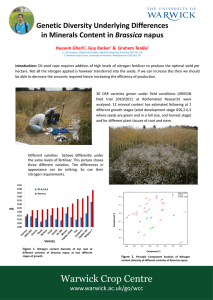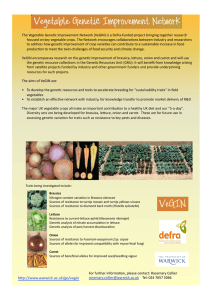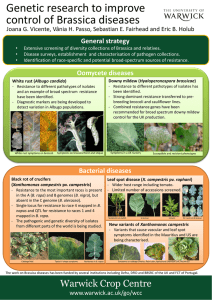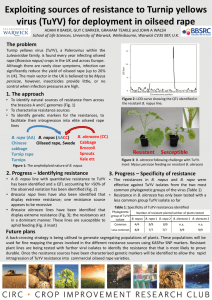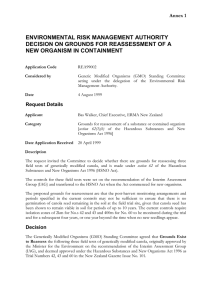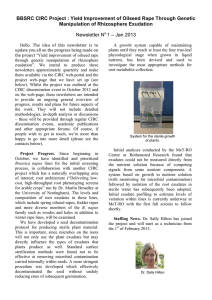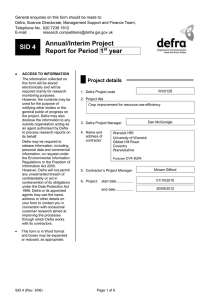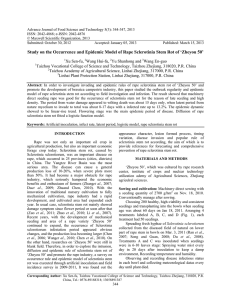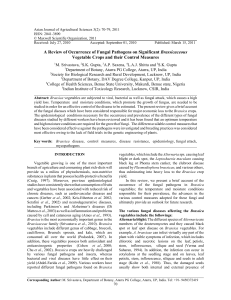Sclerotinia Brassica
advertisement
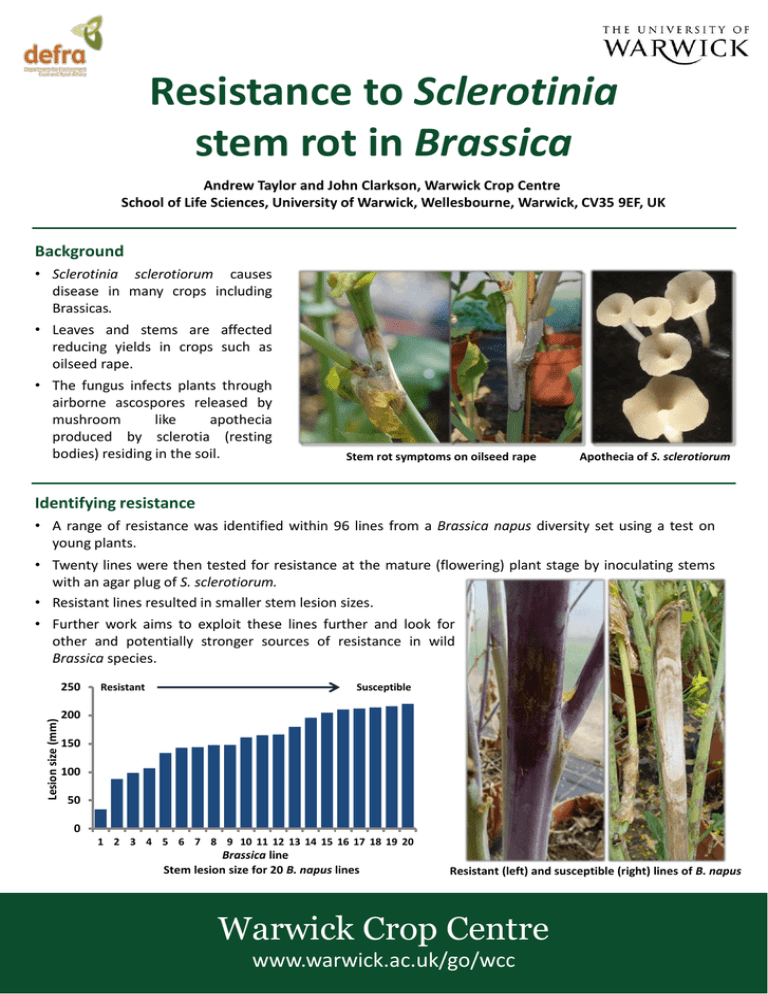
Resistance to Sclerotinia stem rot in Brassica Andrew Taylor and John Clarkson, Warwick Crop Centre School of Life Sciences, University of Warwick, Wellesbourne, Warwick, CV35 9EF, UK Background • Sclerotinia sclerotiorum causes disease in many crops including Brassicas. • Leaves and stems are affected reducing yields in crops such as oilseed rape. • The fungus infects plants through airborne ascospores released by mushroom like apothecia produced by sclerotia (resting bodies) residing in the soil. Stem rot symptoms on oilseed rape Apothecia of S. sclerotiorum Identifying resistance • A range of resistance was identified within 96 lines from a Brassica napus diversity set using a test on young plants. • Twenty lines were then tested for resistance at the mature (flowering) plant stage by inoculating stems with an agar plug of S. sclerotiorum. • Resistant lines resulted in smaller stem lesion sizes. • Further work aims to exploit these lines further and look for other and potentially stronger sources of resistance in wild Brassica species. Lesion size (mm) 250 Resistant Susceptible 200 150 100 50 0 1 2 3 4 5 6 7 8 9 10 11 12 13 14 15 16 17 18 19 20 Brassica line Stem lesion size for 20 B. napus lines Resistant (left) and susceptible (right) lines of B. napus Warwick Crop Centre www.warwick.ac.uk/go/wcc

